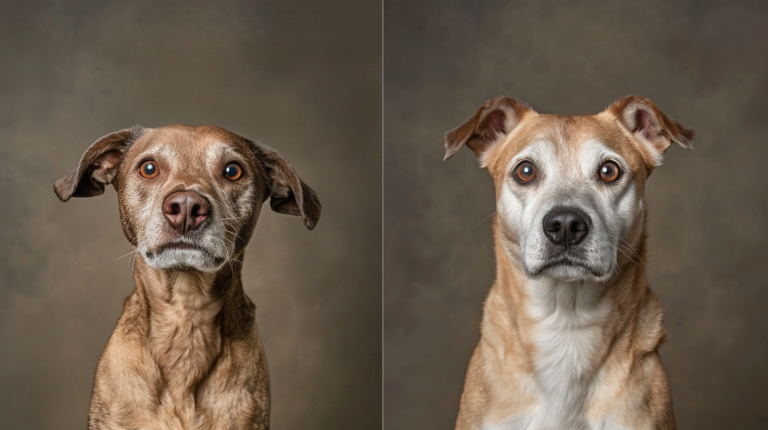Discover essential signs for monitoring pet health with our comprehensive guide. Learn to detect early warning signs and establish effective pet wellness routines.
Table of Contents
Introduction

As pet parents, we share our homes, our lives, and our hearts with our furry, feathered, or scaled companions. These beloved family members rely on us completely for their care and well-being. Yet unlike human family members, pets cannot verbally communicate when they’re feeling unwell. This makes monitoring pet health a critical responsibility for every pet owner. By understanding what signs to look for and establishing regular health monitoring routines, you can detect potential issues early, ensure prompt veterinary care when needed, and ultimately help your pet live a longer, healthier, and happier life.
According to the American Veterinary Medical Association, many pets suffer from health conditions that go undetected until they become serious—and sometimes life-threatening. In fact, studies show that regular monitoring of pet health can add up to 2-3 years to a pet’s lifespan by catching issues before they escalate. This comprehensive guide will walk you through everything you need to know about recognizing the subtle (and not-so-subtle) signs that your pet may need medical attention, creating effective health monitoring routines, and partnering with your veterinarian for optimal pet wellness.
Why Monitoring Pet Health Matters
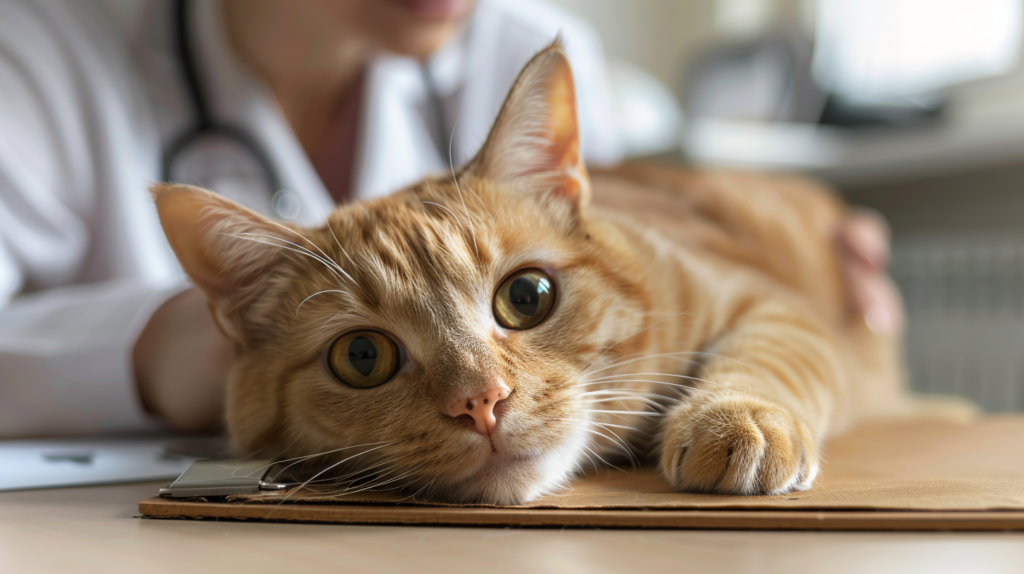
The importance of vigilant pet health monitoring cannot be overstated. Our animal companions are masters at hiding discomfort—an evolutionary trait that helped their wild ancestors avoid appearing vulnerable to predators. This instinct means that by the time many pets show obvious signs of illness, the condition may already be quite advanced.
Dr. Sarah Johnson, a veterinary specialist with over 20 years of experience, explains: “Many of the emergency cases we see could have been addressed earlier and with better outcomes if the owners had recognized the subtle warning signs. Regular monitoring of your pet’s health allows you to establish what’s normal for your individual pet and notice deviations before they become emergencies.”
Consider these compelling statistics:
- According to a 2023 survey by the Pet Health Network, pets who undergo regular health monitoring at home are 60% less likely to require emergency veterinary care.
- The American Animal Hospital Association reports that early detection of pet health issues can reduce treatment costs by up to 40%.
- A long-term study published in the Journal of Veterinary Medicine found that pets whose owners practiced consistent health monitoring lived an average of 15% longer than those who did not.
Now that we understand why monitoring pet health is so crucial, let’s dive into the specific signs and systems you should be regularly checking.
1. Physical Appearance: The Visual Indicators
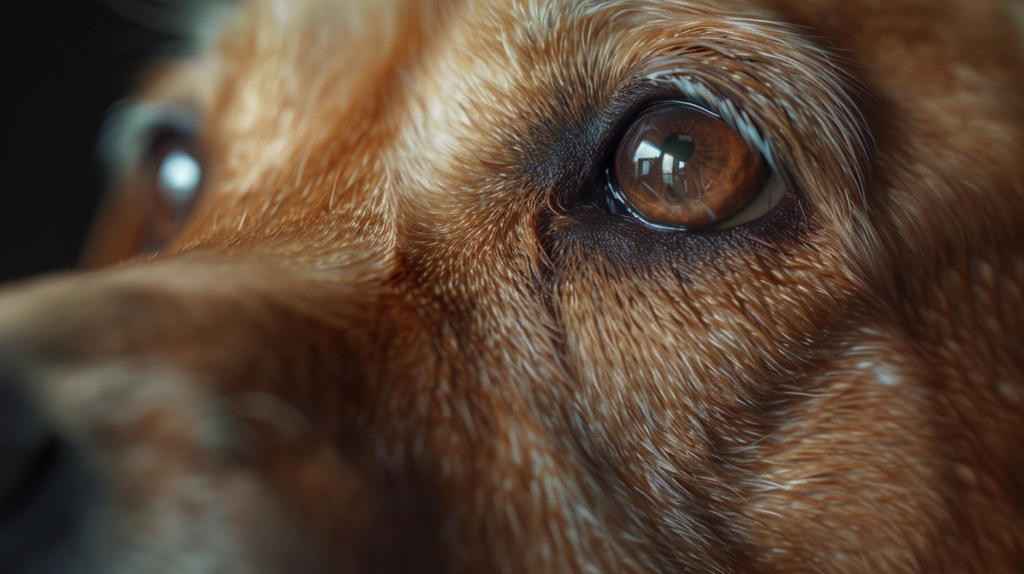
Your pet’s physical appearance offers valuable clues about their overall health status. Regular observation of the following aspects can help you detect changes that might signal health concerns:
Coat and Skin Health
A healthy pet typically has a shiny, clean coat without excessive dander, bald patches, or signs of irritation. When monitoring pet health, pay attention to:
- Coat quality: Dullness, excessive shedding, or brittleness can indicate nutritional deficiencies or underlying health issues.
- Skin conditions: Redness, flaking, bumps, or unusual growths may signal allergies, parasites, or more serious conditions requiring veterinary attention.
- Itching or scratching: Occasional scratching is normal, but persistent itching could indicate allergies, parasites, or skin infections.
Research published in the Veterinary Dermatology Journal indicates that 60% of skin issues in pets are early indicators of systemic health problems, making regular coat and skin checks an essential aspect of monitoring pet health.
Weight and Body Condition
Maintaining an appropriate weight is crucial for your pet’s overall health and longevity. According to the Association for Pet Obesity Prevention, over 50% of dogs and cats in the United States are overweight or obese, predisposing them to numerous health issues including diabetes, joint problems, and reduced lifespan.
When monitoring your pet’s health, regularly check:
- Body condition score: Learn how to assess whether your pet is underweight, ideal weight, or overweight using the 9-point body condition scoring system used by veterinarians.
- Visible changes: Note if your pet appears to be gaining or losing weight unexpectedly.
- Abdominal contour: A suddenly distended abdomen could indicate bloating, fluid retention, or other serious conditions requiring immediate veterinary attention.
Eyes, Ears, Nose, and Mouth
These sensitive areas can reveal much about your pet’s health status:
- Eyes: Should be clear, bright, and free of excessive discharge or redness. Cloudiness, squinting, unequal pupil size, or visible third eyelids are concerning signs.
- Ears: Should be clean and odor-free. Redness, unusual odor, discharge, or excessive head shaking merits veterinary evaluation.
- Nose: A healthy pet’s nose may fluctuate between wet and dry throughout the day, but persistent discharge, crustiness, or changes in color require attention.
- Mouth: Healthy gums are typically pink (though some breeds have naturally darker pigmentation), teeth should be clean without excessive tartar, and breath shouldn’t be extremely foul.
Dr. Michael Rodriguez, veterinary ophthalmologist, notes: “The eyes are truly windows to your pet’s overall health. Many systemic diseases, from diabetes to hypertension, first present with ocular symptoms that vigilant pet owners can detect through regular monitoring of pet health.”
2. Behavioral Changes: Understanding Your Pet’s “Normal”

Perhaps the most valuable tool in monitoring pet health is your intimate knowledge of what constitutes “normal” behavior for your individual companion. Significant deviations from established patterns often signal that something is amiss. Pay attention to:
Activity Level and Mobility
- Energy changes: A typically energetic pet becoming lethargic or a normally calm pet suddenly becoming hyperactive both warrant attention.
- Mobility issues: Difficulty rising, reluctance to climb stairs or jump, limping, or stiffness may indicate pain or joint problems.
- Exercise tolerance: Decreased stamina, excessive panting during moderate activity, or reluctance to exercise can signal respiratory, cardiac, or other health issues.
According to a 2023 study in the Journal of Veterinary Behavior, 78% of pets showed detectable changes in activity levels at least 48 hours before other clinical signs of illness became apparent, highlighting the importance of monitoring pet health through behavioral observation.
Eating and Drinking Habits
Changes in appetite or thirst can be early indicators of numerous health conditions:
- Decreased appetite: Most pets enjoy their meals, so a sudden lack of interest in food is concerning, particularly if it persists for more than 24 hours.
- Increased appetite: While often dismissed as a positive sign, unusual hunger can indicate conditions like diabetes, hyperthyroidism, or certain medications’ side effects.
- Water consumption: Both increased thirst (polydipsia) and decreased water intake can signal health issues ranging from urinary tract infections to kidney disease.
Veterinary nutritionist Dr. Emily Chen recommends: “Track your pet’s food and water intake as part of regular pet health monitoring. A simple journal noting approximate daily consumption can help you identify concerning trends before they become critical.”
Sleep Patterns
Healthy pets typically have consistent sleep patterns:
- Duration: Adult dogs sleep approximately 12-14 hours daily, while cats may sleep 12-16 hours or more. Significant increases or decreases merit attention.
- Quality: Restlessness, difficulty settling, or unusual positions (such as sleeping with the head elevated) may indicate discomfort or pain.
- Location changes: A pet who suddenly seeks isolation or unusual sleeping locations may be experiencing discomfort or stress.
Social Interaction
Changes in how your pet interacts with family members, other pets, or visitors can signal health concerns:
- Withdrawal: A typically sociable pet becoming reclusive often indicates pain or illness.
- Irritability: Increased agitation, growling, hissing, or snapping—especially when touched in specific areas—may indicate pain.
- Neediness: Some pets become unusually clingy or demanding of attention when unwell.
The American College of Veterinary Behaviorists notes that behavioral changes are often the earliest indicators of health issues in pets, making them a critical component of effective monitoring of pet health.
3. Bodily Functions: What’s Going In and Coming Out

Regular monitoring of your pet’s bodily functions provides invaluable insights into their internal health:
Urination Patterns
Changes in urination habits can indicate urinary tract infections, kidney disease, diabetes, and other conditions:
- Frequency: Increased or decreased urination frequency compared to your pet’s normal patterns.
- Volume: Producing notably more or less urine than usual.
- Difficulty: Straining to urinate, crying during urination, or making frequent attempts with minimal output constitutes a veterinary emergency.
- Appearance: Urine should typically be clear yellow. Cloudiness, unusual odor, or blood requires immediate veterinary attention.
A 2022 study in the Journal of Veterinary Internal Medicine found that pet owners who regularly monitored urination patterns detected urinary tract diseases an average of 12 days earlier than those who didn’t practice this aspect of pet health monitoring.
Bowel Movements
Regular assessment of your pet’s stool can reveal much about their digestive and overall health:
- Consistency: Ideal stool is firm but not hard, formed but not crumbly. Both diarrhea and constipation warrant monitoring and potentially veterinary care.
- Frequency: Significant changes in bowel movement frequency may indicate digestive issues.
- Color: Normal stool color varies by diet but typically ranges from light to dark brown. Black, tarry stool can indicate internal bleeding, while white specks might suggest parasites.
- Content: Foreign objects, excessive mucus, or blood require veterinary evaluation.
Vomiting and Regurgitation
Occasional vomiting (particularly in cats) may not be concerning, but patterns or certain characteristics require attention:
- Frequency: Vomiting more than once monthly or multiple times in succession.
- Timing: Vomiting immediately after eating versus several hours later may indicate different issues.
- Content: Blood, yellow bile, foreign objects, or undigested food hours after consumption warrant veterinary consultation.
- Associated symptoms: Vomiting accompanied by lethargy, diarrhea, or pain constitutes a medical concern.
4. Vital Signs: The Baseline Measurements
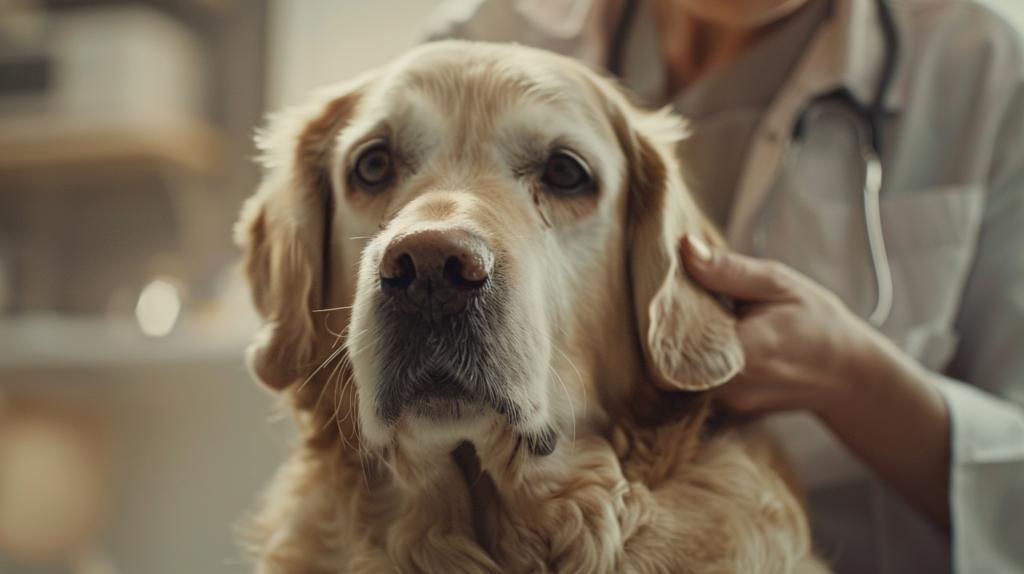
Learning to check your pet’s vital signs is an advanced but valuable skill in monitoring pet health:
Temperature
Normal body temperature ranges:
- Dogs: 101.0°F to 102.5°F (38.3°C to 39.2°C)
- Cats: 100.5°F to 102.5°F (38.1°C to 39.2°C)
- Small mammals (rabbits, guinea pigs): 101°F to 103°F (38.3°C to 39.4°C)
Taking your pet’s temperature requires a digital rectal thermometer (specialized pet thermometers are available) and can be challenging without practice. Your veterinarian can demonstrate the proper technique during a wellness visit.
Heart Rate
Resting heart rate ranges:
- Large dogs: 60-100 beats per minute
- Medium dogs: 80-120 beats per minute
- Small dogs: 100-140 beats per minute
- Cats: 140-220 beats per minute
- Small mammals: Varies by species (rabbits: 120-150, guinea pigs: 230-280)
To check your pet’s heart rate, place your hand over the left side of the chest, just behind the elbow. Count the beats for 15 seconds and multiply by 4.
Respiratory Rate
Normal resting respiratory rates:
- Dogs: 10-30 breaths per minute
- Cats: 20-30 breaths per minute
- Small mammals: Varies by species (rabbits: 30-60, guinea pigs: 40-150)
Count your pet’s breaths (one inhalation plus one exhalation equals one breath) for 30 seconds while they’re resting or sleeping, then multiply by 2.
Dr. Robert Williams, emergency veterinarian, emphasizes: “Establishing your pet’s normal vital sign ranges when they’re healthy gives you powerful comparative data for monitoring pet health during potential illness. I recommend pet owners check vital signs monthly and record the results.”
5. Pain Recognition: The Subtle Signs
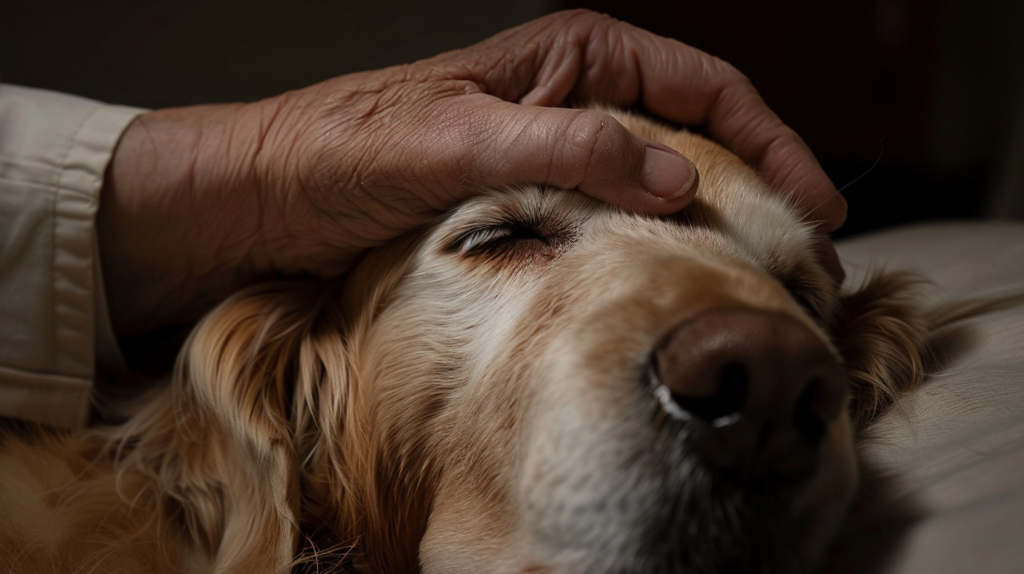
Pets instinctively hide pain, but vigilant owners can learn to recognize the subtle indicators:
Facial Expressions
Research in veterinary pain management has identified specific facial cues associated with pain:
- Eyes: Squinting, glazed appearance, or dilated pupils may indicate pain.
- Ears: Flattened or pulled back ears (in species where this isn’t normal relaxed positioning).
- Mouth: Tight lips, grinding teeth, or unusual drooling patterns.
Posture and Movement
Pain often manifests in how your pet carries themselves:
- Hunched back or tucked abdomen: Often indicates abdominal or spinal pain.
- Rigid stance: Stiffness or reluctance to move normally.
- Limping or favoring: May be obvious or subtle, including weight-shifting when standing.
- Abnormal gait: Changes in how your pet walks or runs.
Vocalization
While some pets become quieter when in pain, others may vocalize more:
- Whimpering, crying, or howling: Particularly when moving or when certain areas are touched.
- Purring: While typically associated with contentment, cats sometimes purr when in significant pain.
- Grunting or groaning: Especially when changing positions.
The International Veterinary Academy of Pain Management recommends that monitoring pet health should include regular “pain checks” where owners gently palpate major muscle groups and joints while watching for reactions indicating discomfort.
6. Special Considerations for Different Life Stages

Monitoring pet health must be adapted to your companion’s life stage, as different ages present different risks and considerations:
Puppies and Kittens
Young animals require vigilant monitoring for:
- Growth rate: Consistent weight gain according to breed/species expectations.
- Development milestones: Appropriate physical and behavioral development for age.
- Vaccination reactions: Mild lethargy for 24-48 hours post-vaccination is normal, but persistent symptoms require veterinary attention.
- Parasites: Young animals are particularly vulnerable to parasitic infections.
According to the American Veterinary Pediatric Association, 30% of puppies and kittens experience at least one health concern in their first year that benefits from early detection through diligent pet health monitoring.
Adult Pets
Middle-aged animals benefit from monitoring focused on:
- Weight management: Preventing the gradual weight gain common in adult pets.
- Dental health: Watching for signs of dental disease, which affects over 80% of pets by age three.
- Reproductive health: For intact animals, monitoring for signs of reproductive system disorders.
- Environmental exposures: Adult pets typically have the most environmental contact, increasing exposure to toxins, parasites, and injuries.
Senior Pets
Aging companions require enhanced vigilance for:
- Cognitive changes: Confusion, altered sleep-wake cycles, or inappropriate elimination may indicate cognitive decline.
- Sensory deficits: Diminished vision or hearing requiring environmental adaptations.
- Mobility issues: Joint stiffness, difficulty with stairs, or reluctance to jump.
- Organ function: Signs of heart, kidney, or liver issues become more common with age.
A longitudinal study published in the Journal of Veterinary Gerontology found that pet owners who practiced consistent monitoring of pet health in senior pets detected age-related diseases an average of 4.2 months earlier than those who relied solely on annual veterinary visits.
7. Creating a Pet Health Monitoring System

Establishing a systematic approach to monitoring pet health improves consistency and effectiveness:
Regular Health Check Schedule
Create a calendar for different aspects of health monitoring:
- Daily checks: Food and water intake, energy level, elimination habits
- Weekly checks: Weight, coat condition, teeth and gums, ears
- Monthly checks: Full body scan for lumps or changes, vital signs check
- Seasonal checks: Parasite prevention status, environmental hazard assessment
Health Journal or App
Maintain records of your observations:
- Baseline information: Document what’s “normal” for your individual pet.
- Tracking changes: Note deviations and whether they resolve or persist.
- Medication records: Log when medications are given and any observed effects.
- Diet information: Track food types, amounts, and any noted reactions.
Many pet health monitoring apps now exist that can simplify this process. The Pet Health Network recommends selecting an app that allows for photo documentation and sharing information directly with your veterinarian.
Technology Aids
Modern technology offers additional tools for monitoring pet health:
- Activity trackers: Similar to human fitness trackers, pet versions monitor activity levels and sleep patterns.
- Smart feeders: Track food consumption patterns and timing.
- Video monitoring: Observe behavior when you’re not home.
- Digital scales: Enable consistent weight tracking.
Dr. Patricia Wong, veterinary technology specialist, notes: “While technology can enhance pet health monitoring, it should supplement rather than replace hands-on assessment and observation. The bond between pet and owner remains the most sensitive detector of subtle health changes.”
Visual Guide to Monitoring Pet Health
| Body System | What to Monitor | Warning Signs | Frequency |
| Digestive | Appetite, stool consistency, vomiting | Decreased appetite, diarrhea, frequent vomiting | Daily |
| Urinary | Urination frequency, urine color | Straining, blood in urine, increased/decreased frequency | Daily |
| Respiratory | Breathing rate, coughing | Labored breathing, persistent cough | Daily |
| Musculoskeletal | Mobility, gait | Limping, difficulty rising | Weekly |
| Skin & Coat | Coat shine, skin condition | Excessive shedding, redness, lumps | Weekly |
| Dental | Teeth, gums, breath | Bad breath, red gums, tartar buildup | Weekly |
| Eyes & Ears | Clarity, discharge | Redness, discharge, cloudiness | Weekly |
| Neurological | Coordination, alertness | Disorientation, head tilt, seizures | Ongoing |
| Cardiovascular | Heart rate, gum color | Fatigue with exercise, pale gums | Monthly |
| Weight | Body condition score | Unexplained weight loss/gain | Monthly |
When to Contact Your Veterinarian
While regular monitoring of pet health helps identify concerns early, knowing when to seek professional care is equally important:
Emergency Situations (Require Immediate Veterinary Attention)
- Difficulty breathing or severe coughing
- Collapse or inability to stand
- Suspected ingestion of toxins
- Severe trauma or bleeding
- Inability to urinate
- Persistent vomiting or diarrhea (especially with blood)
- Seizures
- Extremely high or low body temperature
- Severe pain
- Prolapsed tissues or protruding organs
Urgent Concerns (Require Veterinary Attention Within 24 Hours)
- Mild to moderate vomiting or diarrhea lasting more than 24 hours
- Not eating for more than 24 hours (12 hours for small pets)
- Increased water consumption and urination
- Limping or mobility changes
- Eye discharge or squinting
- Ear infections or head shaking
- Skin irritations or hot spots
- Behavioral changes lasting more than a day
Non-Urgent Concerns (Discuss at Next Regular Appointment)
- Mild transient symptoms that resolve quickly
- Minor skin or coat changes
- Mild tartar buildup
- Slight changes in activity level associated with weather or routine changes
- Questions about preventative care
Dr. James Carter, veterinary practice owner, advises: “When in doubt, call your veterinary clinic. Most practices welcome phone consultations to help determine if an in-person visit is necessary, and this triage approach supports effective pet health monitoring partnerships between owners and veterinary teams.”
Partnering With Your Veterinarian for Optimal Monitoring
Effective monitoring of pet health combines your daily observations with professional veterinary care:
Preparation for Veterinary Visits
Maximize the value of veterinary appointments by:
- Bringing your health monitoring records or journal
- Preparing specific questions and concerns
- Taking videos of intermittent symptoms that may not occur during the appointment
- Noting any environmental or dietary changes
Communication Best Practices
Establish effective information sharing:
- Be specific about observations rather than offering diagnoses
- Quantify changes when possible (e.g., “drinking approximately twice as much water as usual” rather than just “drinking more”)
- Share the timeline of symptom development
- Mention all medications and supplements currently administered
Preventative Care Schedule
Work with your veterinarian to establish appropriate:
- Vaccination schedules based on lifestyle and risk factors
- Parasite prevention protocols
- Screening tests appropriate for age, breed, and health history
- Dental care recommendations
A survey conducted by the Veterinary Hospital Managers Association found that pet owners who maintained consistent health monitoring records at home received 23% more personalized preventative care recommendations from their veterinarians, highlighting the value of the partnership approach to monitoring pet health.
FAQ: Common Questions About Monitoring Pet Health
Q: How often should I weigh my pet as part of monitoring their health?
A: Healthy adult pets should be weighed monthly, while pets on weight management programs, those with certain medical conditions, or growing puppies and kittens may need weekly weigh-ins. Consistency is key—use the same scale at approximately the same time of day (preferably before meals).
Q: What subtle behavioral changes might indicate pain in my pet?
A: Look for changes like decreased grooming, altered sleeping positions, reduced jumping or climbing, social withdrawal, decreased play, increased irritability when touched in specific areas, or changes in appetite. The Pain Management Guidelines from the American Animal Hospital Association note that behavioral changes are often the earliest indicators of pain in pets.
Q: How can I tell if my pet’s gums are a healthy color?
A: Healthy gums are typically bubble-gum pink, though some breeds have naturally pigmented gums. In addition to color, check capillary refill time by gently pressing on the gum until it blanches white, then release and count how quickly color returns—it should take less than 2 seconds. Pale, white, blue, yellow, or bright red gums warrant immediate veterinary attention.
Q: Is my pet’s shedding normal or a sign of health issues?
A: Some shedding is normal for most pets, with seasonal increases typically occurring in spring and fall. Excessive shedding accompanied by skin changes, bald patches, or other symptoms may indicate allergies, parasites, stress, or nutritional deficiencies. Monitoring pet health includes noting significant changes in shedding patterns.
Q: How can I monitor my pet’s dental health at home?
A: Regular home dental checks should include examining teeth for tartar buildup (yellow or brown deposits), checking gum color and texture (looking for redness, swelling, or bleeding), and noting any unusual breath odor. The Veterinary Oral Health Council recommends gradually acclimating pets to having their mouths handled to facilitate these important checks.
Q: What changes in water consumption should concern me?
A: Both increased and decreased water intake can signal health issues. As a general guideline, dogs typically drink 20-40ml of water per pound of body weight daily, while cats average 5-10oz total. Track your pet’s normal consumption to establish a baseline, then note sustained changes of 50% or more in either direction.
For more expert pet care tips and product recommendations, visit BlithePet.com your trusted source for pet wellness.
Conclusion:
Consistent monitoring of pet health represents one of the greatest gifts you can give your animal companion. By establishing regular monitoring routines, recognizing what’s normal for your individual pet, and promptly identifying changes that warrant professional attention, you become your pet’s most effective healthcare advocate.
The statistics clearly demonstrate that vigilant health monitoring leads to earlier intervention, less invasive treatments, reduced veterinary costs, and—most importantly—longer, healthier lives for our beloved pets. As Dr. Elizabeth Morgan, veterinary internal medicine specialist, summarizes: “The most powerful diagnostic tool is not in any veterinary hospital—it’s the observant pet owner who knows their companion’s normal patterns and notices when something changes.”
By implementing the comprehensive pet health monitoring strategies outlined in this guide, you’re taking a proactive role in your pet’s healthcare journey. Remember that these monitoring practices complement rather than replace regular veterinary care, creating a powerful partnership focused on keeping your pet in optimal health throughout all life stages.
Have a similar experience with your pet? Share it in the comments below!







